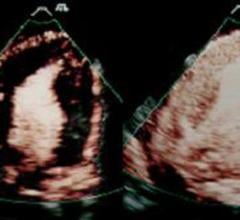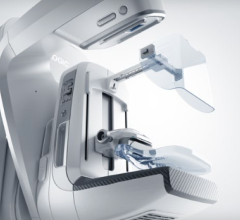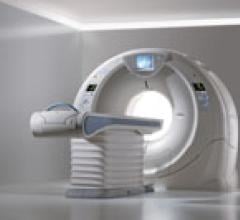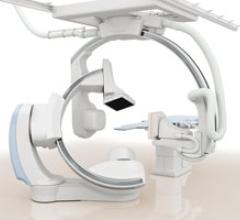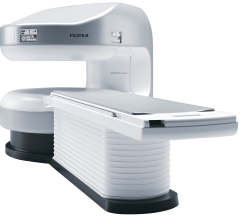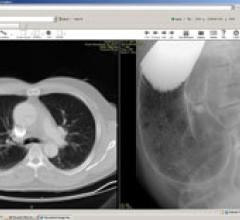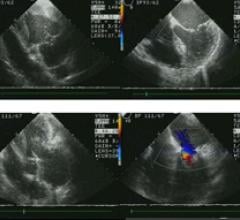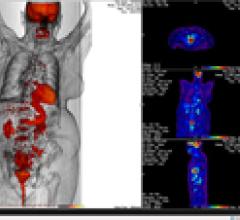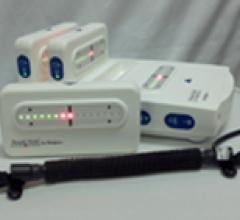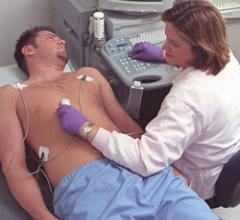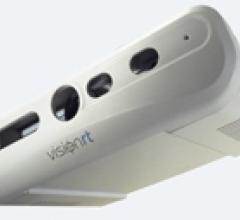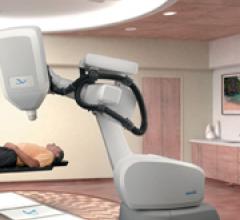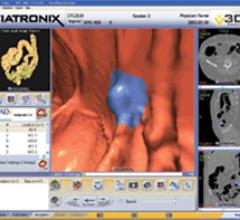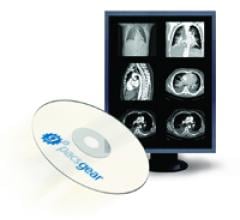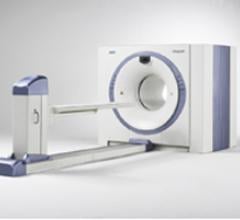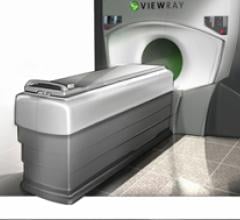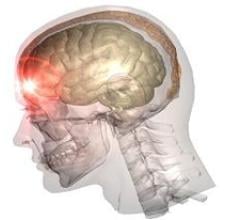October 4, 2011 — Viztek will display the newest features of its Opal-RAD picture archiving and communication system (PACS) at RSNA 2011.
October 4, 2011 – The International Contrast Ultrasound Society (ICUS) submitted a petition this week to the U.S. Food and Drug Administration (FDA) requesting removal of the boxed warnings on ultrasound contrast agents. The members of the group say this would bring the product labeling into line with the current body of scientific research, which it says clearly demonstrates the safety and clinical benefits of these imaging products.
Riverain SoftView bone suppression technology is designed to increase the clarity of chest X-rays by suppressing the ...
While most women understand the importance of health screenings, an estimated 72 million have missed or postponed a ...
Toshiba’s Aquilion One enables dynamic imaging of an entire organ, resulting in the ability to reduce diagnosis time ...
Toshiba America Medical Systems will showcase the Infinix VF-i bi-plane angiography system with dual 12”x12” mid-size ...

SPONSORED CONTENT — Fujifilm’s latest CT technology brings exceptional image quality to a compact and user- and patient ...
Toshiba America Medical Systems Inc. will showcase its suite of premium ultrasound systems, including the Aplio XG ...
Fujifilm’s APERTO Lucent is a 0.4T mid-field, open MRI system addressing today’s capability and image quality needs ...
October 3, 2011 — Siemens Healthcare announced its Mobilett Mira, the company’s first mobile digital X-ray system with a wireless detector, recently received 510(k) clearance from the U.S. Food and Drug Administration (FDA). The system is now commercially available in the United States.
October 3, 2011 — Image processing software developer Claron Technology will highlight expansions and enhancements to its two major product families—Nil (No Install) and WIF (Withinsight Framework)—at RSNA 2011.
October 3, 2011 —The American Society of Echocardiography (ASE) has published guidelines for new applications for echocardiography in the neonatal intensive care unit (NICU). An expert consensus statement, “Targeted Neonatal Echocardiography in the Neonatal Intensive Care Unit: Practice Guidelines and Recommendations for Training,” has been published in the October 2011 issue of JASE, the ASE’s monthly journal, and is also available online at: www.asecho/guidelines. The document defines the scope and appropriateness of echocardiography in the NICU and defines standards for both the echocardiographic examination and the individuals who perform and interpret these studies.
SPONSORED CONTENT — Fujifilm’s latest CT technology brings exceptional image quality to a compact and user- and patient ...
October 3, 2011 — Kjaya Medical will debut iShareScan.com, a cloud-based image sharing solution, at RSNA 2011. The site is available at no cost to imaging sites. It enables users to upload images to the Kjaya cloud, where they may be accessed, viewed and manipulated instantaneously in 2-D, 3-D or 4-D by authorized physicians utilizing the company’s advanced remote viewer.
October 3, 2011 — Medspira will introduce Breath Hold, a standalone system for respiration monitoring during radiation therapy (RT) treatments, at RSNA 2011. The device is specifically designed for treatments involving the lungs and upper abdomen. It enables patients to accurately self-monitor their breathing patterns based on biofeedback delivered by the device’s simple visual display.
October 3, 2011 – Up to now, on-the-job hazards for cardiac sonographers were usually limited to overtaxed muscles or incorrect body positioning. And the profession, with help from equipment manufacturers, has made remarkable progress in identifying and lessening these problems. But now, based on discussions initiated on the American Society of Echocardiography’s (ASE) social media website, [email protected] and results of an ASE survey, there appear to be growing concerns about radiation exposure. As October is Medical Ultrasound Awareness Month, the ASE believes it is appropriate to address this emerging concern for cardiovascular sonographers. Are sonographers getting more radiation on the job than is acceptable for their health?
SPONSORED CONTENT — EnsightTM 2.0 is the newest version of Enlitic’s data standardization software framework. Ensight is ...
September 30, 2011 — Vision RT announced it has increased sales of AlignRT, its 3-D imaging platform, to several advanced TrueBeam facilities in the United States in recent months.
September 30, 2011 — The CyberKnife Coalition announced that more than 500 men have been enrolled in the first national patient registry designed to track prostate cancer patients treated with stereotactic body radiation therapy (SBRT). All of the patients were treated with the CyberKnife Robotic Radiosurgery System.
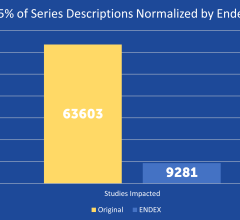
SPONSORED CONTENT — EnsightTM 2.0 is the newest version of Enlitic’s data standardization software framework. Ensight is ...
September 30, 2011 – iCAD Inc. will showcase its family of computer-aided detection (CAD) and advanced imaging solutions at the Radiological Society of North America’s (RSNA) Annual Meeting, Nov. 27-Dec. 3, 2011, in Chicago, Ill.
September 30, 2011 – PACSGear announced an expanded strategy to combine medical images from all departments with electronic health records (EHR). The “PACS 2.0” initiative is the evolution of medical image connectivity to include integration with the electronic health record.
September 30, 2011 – Siemens Healthcare returns to the Annual Meeting of the American Society for Radiation Oncology (ASTRO), Oct. 2-6 in Miami, with a broad range of solutions that multiply chances – for life. At this year’s booth (#203), Siemens will demonstrate its strong commitment to battling cancer with a portfolio that covers the spectrum of oncology care, with a particularly strong focus on diagnostic oncology imaging in in-room and outside-the-room imaging as well as in radiation therapy.
September 30, 2011 – The Molecular Imaging Biomarker Research Group of Siemens Medical Solutions recently completed a Phase II multi-center clinical trial of its HX4 positron emission tomography (PET) imaging biomarker, which is designed to detect hypoxia – a reduction in tissue oxygen levels – in solid tumors. The trial’s primary objective was to test the reproducibility of HX4’s uptake in tumors by conducting PET/computed tomography (CT) scans of the same patient on sequential days in a test-retest protocol. The trial enrolled 40 patients with head and neck, lung, liver, rectal or cervical cancers, who were scheduled to receive chemotherapy, radiation therapy or a combination of the two.
September 30, 2011 – ViewRay Inc. will present potential applications for magnetic resonance imaging (MRI)-guided radiotherapy at the annual meeting of the American Society for Radiation Oncology (ASTRO) Oct. 2-4 in Miami Beach, Fla., with software demonstrations in booth #865. The company's new research radiation therapy system is being developed to feature a patented combination of radiotherapy delivery and simultaneous magnetic resonance imaging (MRI). The system is being designed to let radiation oncologists see what they're treating, while they're treating.
September 28, 2011 – Researchers have a new weapon in their arsenal to diagnose and treat traumatic brain injury (TBI) and post-traumatic stress disorder (PTSD) among military service members and civilians. The National Institutes of Health Clinical Center began imaging patients last week on a first-of-its-kind, whole-body simultaneous positron emission tomography (PET) and magnetic resonance imaging (MRI) device. The Biograph mMR offers a more complete picture of abnormal metabolic activity in a shorter time frame than separate MRI and PET scans, two tests many patients undergo.


 October 04, 2011
October 04, 2011 
